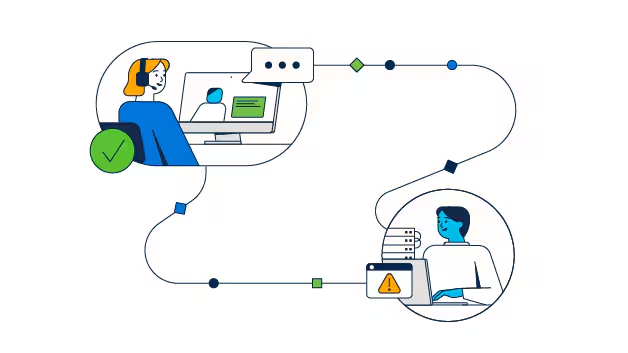
Incident Response Planning: Building a Robust Strategy for SMEs
Table of Contents
- The Importance of Incident Response Planning for SMEs
- Key Components of an Incident Response Plan
- Best Practices for SME Incident Response Planning
- Conclusion
In today’s digital landscape, small and medium-sized enterprises (SMEs) face an ever-increasing threat of cyber attacks. The stark reality is that no organisation is immune to potential cybersecurity incidents, making a well-defined incident response plan crucial for business survival. This article will guide SMEs through the process of building an effective incident response strategy, ensuring they’re prepared to handle security breaches swiftly and efficiently.
The Importance of Incident Response Planning for SMEs
SMEs are often prime targets for cybercriminals due to their potentially weaker security measures and limited resources. A comprehensive incident response plan is essential for several reasons:
- Minimising damage: A well-executed plan can significantly reduce the impact of a security breach.
- Faster recovery: With clear protocols in place, businesses can restore operations more quickly.
- Reputation management: An effective response helps maintain client trust and protects the company’s brand.
- Legal compliance: A proper plan ensures adherence to data protection regulations and mitigates potential litigation risks.
Key Components of an Incident Response Plan
1. Risk Assessment and Objective Setting
Begin by conducting a thorough risk assessment to identify potential threats and vulnerabilities specific to your business. This process should include:
- Evaluating critical assets, systems, and data
- Determining the potential impact of various security incidents
- Establishing clear objectives for your incident response strategy
2. Incident Response Team Formation
Designate a dedicated incident response team, clearly defining roles and responsibilities. Ensure that team members are well-trained and have access to necessary resources. For SMEs with limited in-house expertise, consider partnering with external incident response providers.
3. Detection and Analysis Procedures
Develop robust processes for identifying and analysing potential security incidents. This should include:
- Implementing tools and systems for threat detection
- Establishing criteria for incident classification and prioritisation
- Creating guidelines for evidence gathering and documentation
4. Containment and Eradication Strategies
Outline specific steps for containing and eradicating threats once they’ve been identified. This may involve:
- Isolating affected systems to prevent further damage
- Removing malware or other malicious elements
- Patching vulnerabilities and strengthening security measures
5. Recovery and Business Continuity
Detail procedures for restoring affected systems and returning to normal operations. Key considerations include:
- Verifying the integrity of restored systems
- Implementing additional security controls to prevent similar incidents
- Gradually reintegrating affected systems into the production environment
6. Communication and Reporting Protocols
Establish clear guidelines for internal and external communication during and after an incident. This should cover:
- Notifying relevant stakeholders, including employees, clients, and partners
- Preparing templates for various types of incident communications
- Designating spokespersons for media interactions, if necessary
7. Post-Incident Review and Improvement
Implement a process for conducting thorough post-incident analyses. This helps in:
- Identifying lessons learned from each incident
- Updating the incident response plan based on new insights
- Continuously improving overall security posture
Best Practices for SME Incident Response Planning
- Expect the worst: Prepare for various scenarios, including severe cyber attacks.
- Maintain offline backups: Ensure critical data and systems can be restored from secure, offline sources.
- Implement layered security: Utilise multiple security tools and measures to create a robust defence.
- Regularly test and update the plan: Conduct drills and revise the strategy as needed to ensure its effectiveness.
- Foster a security-aware culture: Train employees on cybersecurity best practices and their roles in incident response.
Conclusion
For SMEs, a well-crafted incident response plan is not just a safety net—it’s a critical component of business resilience. By following these guidelines and tailoring them to your specific needs, you can develop a robust strategy that protects your assets, maintains customer trust, and ensures swift recovery in the face of cyber threats. Remember, the goal is not just to respond to incidents, but to emerge stronger and more secure after each challenge.
Follow Destiny Young on his social media handles for engaging conversations around tech, IT, cybersecurity, AI, emerging trends, and tips.
This article was originally published at https://youngdestinya.ng/incident-response-planning-building-a-robust-strategy-for-smes/











































